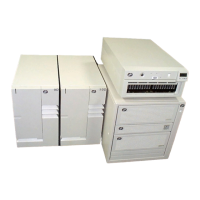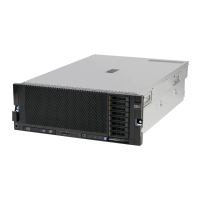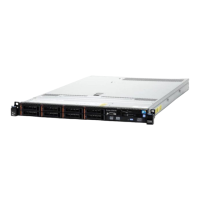v A processor or memory DIMM reaches a threshold of recovered failures that results in a predictive
callout (as determined by the processor run-time diagnostics in the service processor).
During
boot time, the service processor does not configure processors or memory DIMMs that are marked
″bad.″
If a processor or memory DIMM is deconfigured, the processor or memory DIMM remains offline for
subsequent reboots until it is replaced or Repeat Gard is disabled. The Repeat Gard function also allows
users to manually deconfigure a processor or memory DIMM, or re-enable a previously deconfigured
processor or memory DIMM. For information on configuring or deconfiguring a processor, see the
Processor Configuration/Deconfiguration Menu on page 373. For information on configuring or
deconfiguring a memory DIMM, see the Memory Configuration/Deconfiguration Menu on page 374. Both of
these are submenus under the System Information Menu.
You can enable or disable CPU Repeat Gard or Memory Repeat Gard using the Processor
Configuration/Deconfiguration Menu, which is a submenu under the System Information Menu.
Run-Time CPU Deconfiguration (CPU Gard)
L1 instruction cache recoverable errors, L1 data cache correctable errors, and L2 cache correctable errors
are monitored by the processor run time diagnostics (PRD) code running in the service processor. When a
predefined error threshold is met, an error log entry with warning severity and threshold exceeded status is
returned to AIX. At the same time, PRD marks the CPU for deconfiguration at the next boot. AIX will
attempt to migrate all resources associated with that processor to another processor and then stop the
defective processor.
Service Processor System Monitoring - Surveillance
Surveillance is a function in which the service processor monitors the system, and the system monitors the
service processor. This monitoring is accomplished by periodic samplings called heartbeats.
Surveillance is available during two phases:
v System firmware bring-up (automatic)
v Operating system run time (optional)
System Firmware Surveillance
System firmware surveillance is automatically enabled during system power-on. It cannot be disabled by
the user, and the surveillance interval and surveillance delay cannot be changed by the user.
If the service processor detects no heartbeats during system IPL (for a set time period), it cycles the
system power to attempt a reboot. The maximum number of retries is set from the service processor
menus. If the fail condition persists, the service processor leaves the machine powered on, logs an error,
and displays menus to the user. If call-out is enabled, the service processor calls to report the failure and
displays the operating system surveillance failure code on the operator panel.
Operating System Surveillance
Operating system surveillance provides the service processor with a means to detect hang conditions, as
well as hardware or software failures, while the operating system is running. It also provides the operating
system with a means to detect a service processor failure caused by the lack of a return heartbeat.
Operating system surveillance is not enabled by default, allowing you to run operating systems that do not
support this service processor option.
You can also use the service processor menus and the AIX diagnostic service aids to enable or disable
operating system surveillance.
Chapter 8. Using the Service Processor 393

